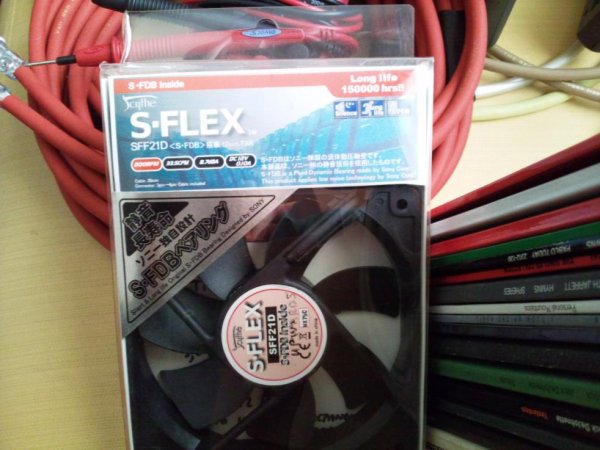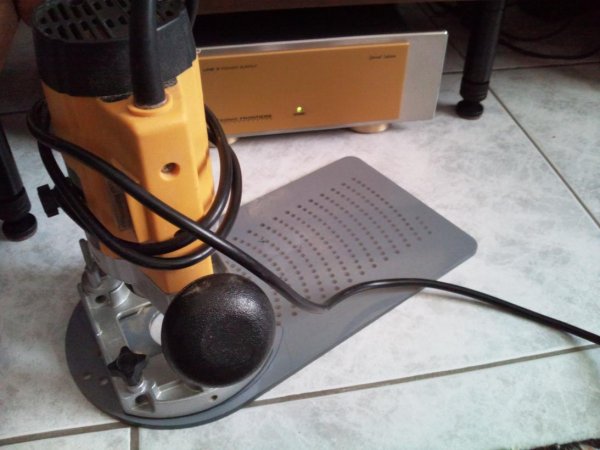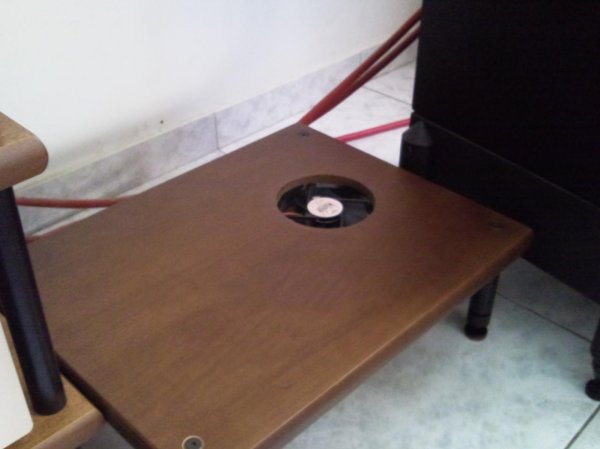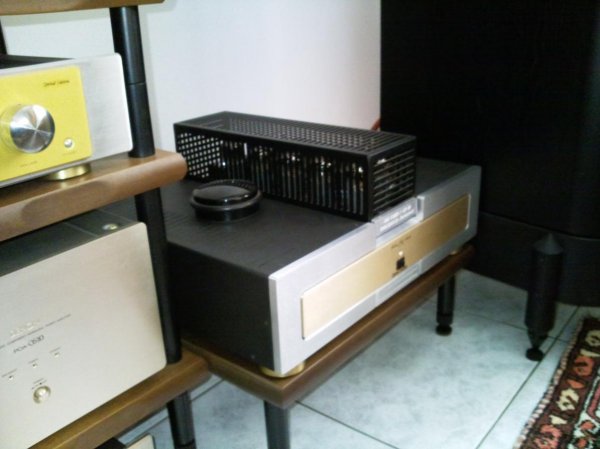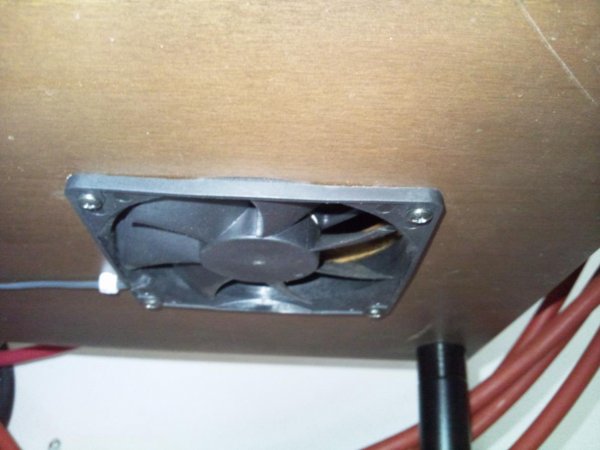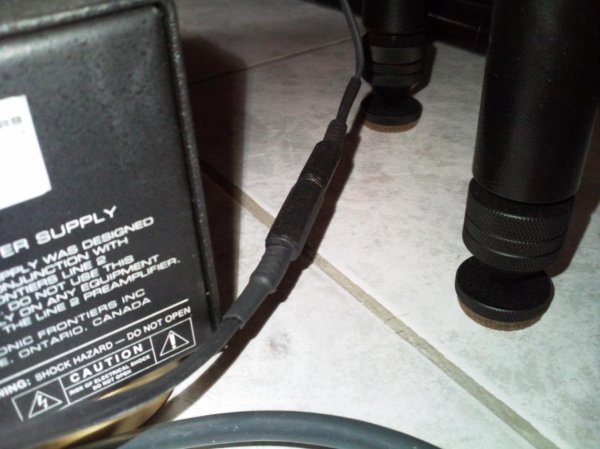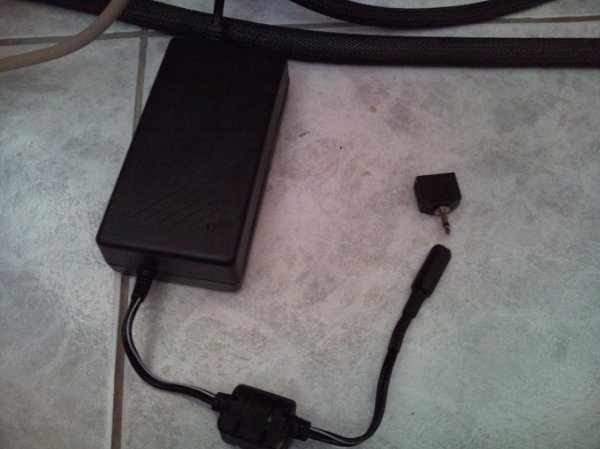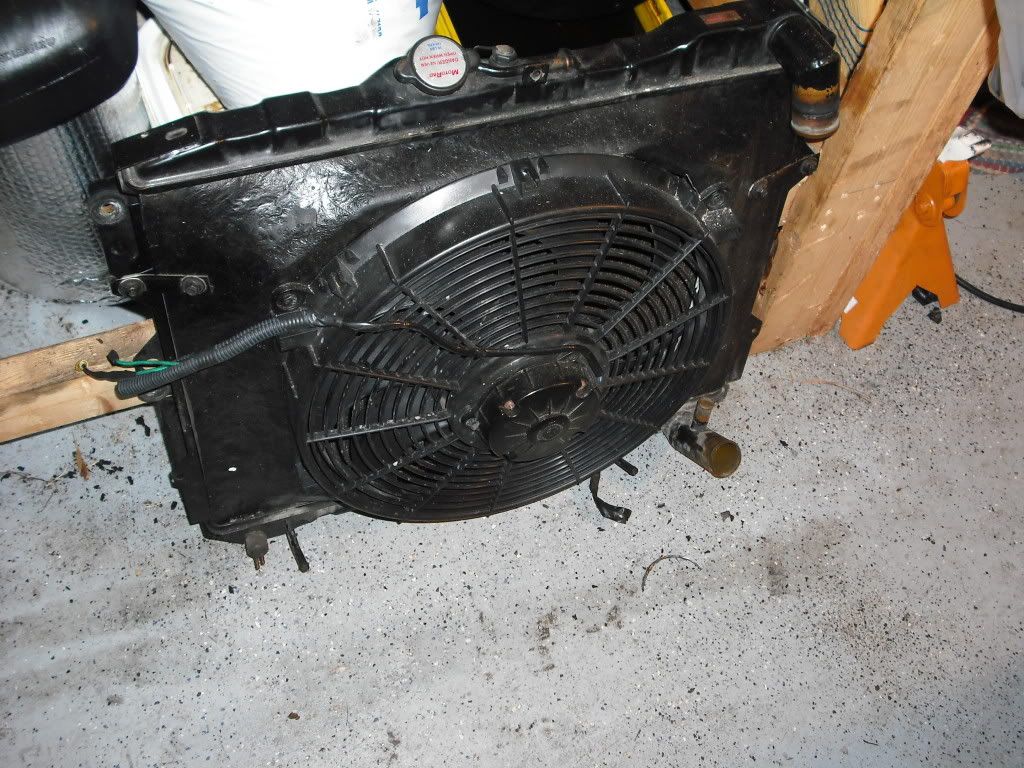I use modified GTA SE-100 tube amps and the issue of reliability has always been a concern to me...
"Thermionic" is a old tube term that describes exactly that:you need heat to get those electrons fly!
Also massive transformers working on high voltage and resistor banks exude heat!
The result is a very hot device that a)Plays music the way no SS amp can!
b) works great as a heat source on cold winter nights!
c)It's internals operate in a very unforgiving environment that
stresses their reliability and shortens their life span!
Having the privilege to start the modification from scratch i had taken great consideration on dealing with the heat issues that tantalize every tube amp.
I have hand picked all parts to work safely up to 105 deg Celsius (e.g.most of the original caps
were of the common 85 deg variety),upgraded critical resistors to the next wattage level,
installed separate heatsinks on all big wirewound resistors,arranged wires away from overheated places inside the amp and sometimes moved parts so i could keep a constant air flow from bottom to top.All this worked nicely and have produced hot running but reliable amps.
BUT my mind was not at rest.Sometimes on hot days and long listening sessions i could measure chassis temperatures over 65 deg!That is an amp casing that is way too hot to touch!
Forced ventilation was troubling my mind but i had to find a way to implement it effectively.
A quick search in the net provided various solutions (in the form of 12V fans) and i had to pick a winner.After a lot of consideration i decided on buying 3 fans (12X12cm version) from Scythe.
These are model S-Flex SFF21D.
They are guaranteed for 150000 hours, work on 8000 rpm/12V,6000rpm/9V, consume only 0.1 amps on 12V, they have absolutely no vibrations and a noise level of only 8.7dbs!
This is all achieved with the use of a Sony patented "Fluid dynamic bearing".
Next step was to make sure that i had taken all reasonable precautions to make sure that no
electric "pollution" was entering the amps chassis.
I glued a round piece of copper sheet and mu-metal sheet to the center spinning core of the fan
(mu-metal to the core and copper to the amp)and i glued them on the fan side facing the amp.
Next i had to decide where exactly to put it!
Cutting the amps chassis was out of the question but the good thing is that the amps bottom is
"grilled" so i could force the air to come into the amp from the underside.
My amps are on dedicated platforms made from solid steel feet with bronze spikes and cups and 3 cm thick HDF shelves.Their weight is around 15 kilos.
With the use of a Parts Express sourced jig, designed to cut round holes in speaker baffles
i have cut 12cm diameter holes through the HDF, exactly where the amp needs the most cooling
(in the middle of the right side).The fans were screwed on position from the underside of the HDF
with a in-between layer (2mm) of silicone.
A small multiple voltage (15-12-9-6V)power supply was used to power up the three fans.
Without the amps in position, i could hear nothing from a distance of 30 cms from the fans.
I placed my hand on the platform and again could feel no vibration at all.
The amps weigh around fifty kilos each and could certainly damp a little vibration with their mass
but it's a good thing to start without vibration at all!
Then i placed the amps on their position and fired up everything.
Tubes are very picky with vibrations and EMI and although i had taken every precaution you can never know what will happen...
I couldn't hear anything - not from near the amps and certainly not from the speakers.
I turned on and off the fans with music program playing and without, to see if there was any difference, audible or other...
I couldn't detect one!
Of course the real test is the temperature drop and after a four hour high volume listening
i can report that the chassis was never more than 45 deg!I could not expect anything better!
If anyone of you has similar problems with heat soaked tube amps or even class A SS amps
this is a solution that you could seriously consider.It's cheap, easy to install and works!
Of course before you cut any holes in your rack you should check with a working fan in hand
to see if your equipment picks up noise from the fan.If not, you can go on and do it!
Success is guaranteed!
If someone has another solution to the problem, all of us would love to hear about it!
"Thermionic" is a old tube term that describes exactly that:you need heat to get those electrons fly!
Also massive transformers working on high voltage and resistor banks exude heat!
The result is a very hot device that a)Plays music the way no SS amp can!
b) works great as a heat source on cold winter nights!
c)It's internals operate in a very unforgiving environment that
stresses their reliability and shortens their life span!
Having the privilege to start the modification from scratch i had taken great consideration on dealing with the heat issues that tantalize every tube amp.
I have hand picked all parts to work safely up to 105 deg Celsius (e.g.most of the original caps
were of the common 85 deg variety),upgraded critical resistors to the next wattage level,
installed separate heatsinks on all big wirewound resistors,arranged wires away from overheated places inside the amp and sometimes moved parts so i could keep a constant air flow from bottom to top.All this worked nicely and have produced hot running but reliable amps.
BUT my mind was not at rest.Sometimes on hot days and long listening sessions i could measure chassis temperatures over 65 deg!That is an amp casing that is way too hot to touch!
Forced ventilation was troubling my mind but i had to find a way to implement it effectively.
A quick search in the net provided various solutions (in the form of 12V fans) and i had to pick a winner.After a lot of consideration i decided on buying 3 fans (12X12cm version) from Scythe.
These are model S-Flex SFF21D.
They are guaranteed for 150000 hours, work on 8000 rpm/12V,6000rpm/9V, consume only 0.1 amps on 12V, they have absolutely no vibrations and a noise level of only 8.7dbs!
This is all achieved with the use of a Sony patented "Fluid dynamic bearing".
Next step was to make sure that i had taken all reasonable precautions to make sure that no
electric "pollution" was entering the amps chassis.
I glued a round piece of copper sheet and mu-metal sheet to the center spinning core of the fan
(mu-metal to the core and copper to the amp)and i glued them on the fan side facing the amp.
Next i had to decide where exactly to put it!
Cutting the amps chassis was out of the question but the good thing is that the amps bottom is
"grilled" so i could force the air to come into the amp from the underside.
My amps are on dedicated platforms made from solid steel feet with bronze spikes and cups and 3 cm thick HDF shelves.Their weight is around 15 kilos.
With the use of a Parts Express sourced jig, designed to cut round holes in speaker baffles
i have cut 12cm diameter holes through the HDF, exactly where the amp needs the most cooling
(in the middle of the right side).The fans were screwed on position from the underside of the HDF
with a in-between layer (2mm) of silicone.
A small multiple voltage (15-12-9-6V)power supply was used to power up the three fans.
Without the amps in position, i could hear nothing from a distance of 30 cms from the fans.
I placed my hand on the platform and again could feel no vibration at all.
The amps weigh around fifty kilos each and could certainly damp a little vibration with their mass
but it's a good thing to start without vibration at all!
Then i placed the amps on their position and fired up everything.
Tubes are very picky with vibrations and EMI and although i had taken every precaution you can never know what will happen...
I couldn't hear anything - not from near the amps and certainly not from the speakers.
I turned on and off the fans with music program playing and without, to see if there was any difference, audible or other...
I couldn't detect one!
Of course the real test is the temperature drop and after a four hour high volume listening
i can report that the chassis was never more than 45 deg!I could not expect anything better!
If anyone of you has similar problems with heat soaked tube amps or even class A SS amps
this is a solution that you could seriously consider.It's cheap, easy to install and works!
Of course before you cut any holes in your rack you should check with a working fan in hand
to see if your equipment picks up noise from the fan.If not, you can go on and do it!
Success is guaranteed!
If someone has another solution to the problem, all of us would love to hear about it!
Last edited:


